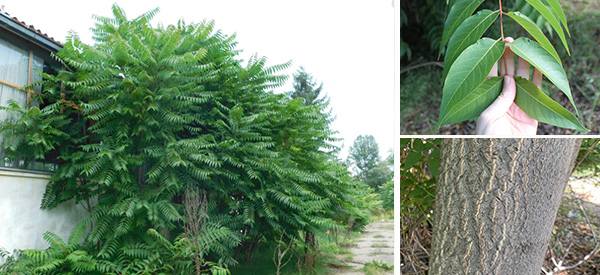
If You Have This Tree in Your Backyard, Don’t Cut it Down!
The Ailanthus, or Tree of Heaven, is a deciduous tree native to China. It was first imported to Europe and the United States in the late 18th century. At one point it was a popular tree to plant in cities because of the tree’s ability to grow rapidly in disturbed areas where other plants and trees are unlikely to grow. It is now found throughout the United States and is considered an invasive species.
Once established, it is difficult to eradicate the tree from an area. A medium-sized tree, the Ailanthus can quickly reach heights of 90 feet. The leaves are long, ranging from one to three feet. The tree can be pruned into an attractive shape providing shade.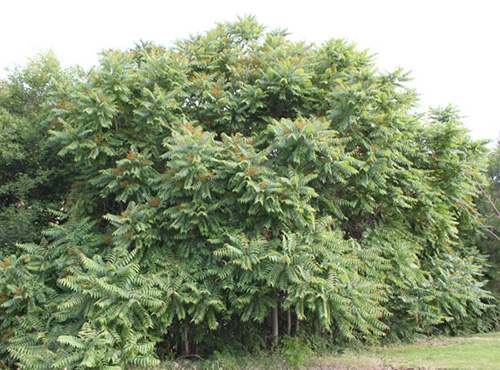
These qualities along with its medicinal properties made this tree a popular choice for cities historically. However, its invasive nature and the noxious smell associated with its flowers have changed popular opinion. The pollen is highly allergenic and many people may develop rashes when cutting it down.
Traditional Uses
Yet while not so popular in the US and Europe, Ailanthus altissima was used in traditional medicine for the treatment of dysentery, gonorrhea, hemorrhoids, and a remedy for cough, gastric and intestinal upsets, anemia, diarrhea, hemorrhage, and spermatorrhea. It is also used as an antispasmodic, antiasthmatic, cardiac depressant, astringent, and for the treatment of epilepsy.
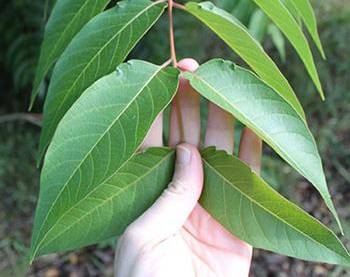
While there are recipes that use all parts of the tree, the bark is the most commonly used part. The bark of the tree is harvested in spring and then dried.
Next, you scrape off the hard outer bark. Traditionally, the bark is sun-dried. If you want to speed up the process a commercial dehydrator will work just as well and be much quicker.
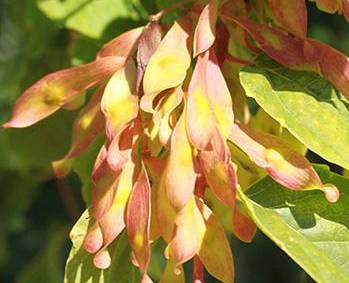
However, if you are looking to continue the traditional method you would partially rehydrate the bark by soaking it in water and then dry it a second time, this time in a basket. When it is fully dry you can cut it into strips. Store in a cool, dark place in an airtight container. Ailanthus can be used as a decoction or made into a tincture. Use caution with Ailanthus because the plant is potentially poisonous and can cause vomiting.
The most approachable way to use Ailanthus is to apply it externally. You can create a decoction with the leaves, which have astringent quality. Steep the leaves in boiling water for five minutes.
Strain the leaves and allow the liquid to cool. This liquid can be used to soothe rashes, clean wounds, and calm skin irritation.
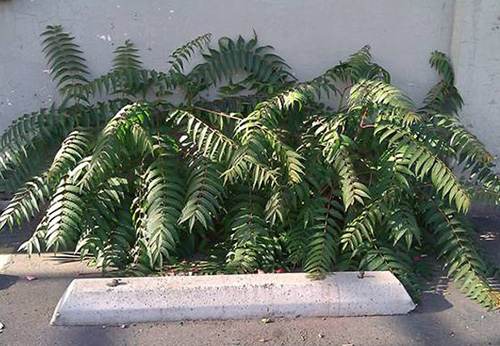
A decoction can also be made with root bark to consume internally. The decoction is generally used to treat dysentery and bowel problems, excessive menstrual bleeding, and malaria. Use no more than 6-9 grams as the bark can cause vomiting and is potentially poisonous. Simply pour boiling over the dry root bark and allow it to steep. Strain the bark. The bark is excessively bitter.
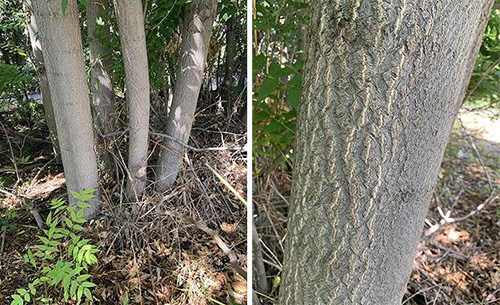
A tincture of Ailanthus has been shown to be effective in treating epilepsy, heart palpitations, and asthma. A tincture allows you to extract the medicinal compounds in alcohol. This can be done simply at home with materials you likely already have on hand.
Ailanthus tincture
- 3-4 ounces of Ailanthus bark
- Vodka (or other alcohol at least 80 proof)
- Mason jar
- Coffee filter
- Funnel
- Tinted bottles for storage
- First, crush the Ailanthus bark

- Cover the bark with vodka to a minimum of two fingers above the top. Do not exceed double the height of roots or your tincture will not be as strong.

- Seal the jar and leave in a cool dark place for at least two weeks
- When your tincture is ready place a coffee filter inside a funnel and strains the liquid into a tinted bottle for storage.

- Store in a cool dark place
Dosage: 60-90 drops up to 3x/ day alone or in warm water.
Tree of Heaven Tea
Here is a video recipe:
These are just a few examples of the many ways Ailanthus can be used medicinally. Besides being used medicinally, in times of food shortages, the leaves can be cooked and eaten but they do have an unpleasant bitter taste. Make sure to eat them only in moderation because of the potential toxicity of the plant. Overall while the plant may be considered a nuisance by some there are many beneficial uses to be found for the Tree of Heaven. It is clear why in other areas of the world the tree is prized.
You may also like:
 25 Little Known Medicinal Uses for Tree Bark
25 Little Known Medicinal Uses for Tree Bark
How to Make Bark Bread from a Tree that Grows on Almost Every Street in America (Video)

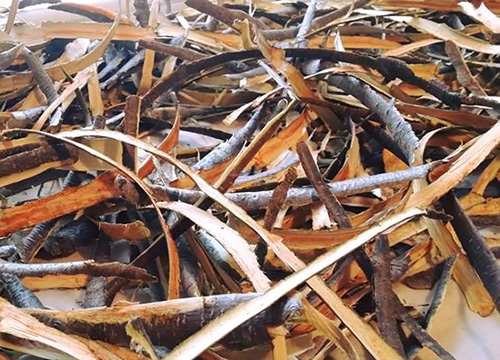


PLEASE reread what you have written, change it and re-post. I would like to respect you as a budding writer. Between your emphatic title and the last sentence of paragraph 5 you have a conflict. If we are training new harvesters of medicinal plants our words MUST reflect the wisdom of taking less than a third (and all other conservative measures).
Hi Ellen,
Thank you so much for your comment.
I understand that the title was confusing.
We’ll put your valuable feedback to good use.
God bless!
is this tree the same as the Summac?
Hi Alice,
Thank you for your comment.
At a quick glance, Tree-of-Heaven and native sumac may seem indistinguishable, or at least confusing, but upon closer inspection, there are several key characteristics to look for that will quickly distinguish the invasive Tree-of-Heaven from the native sumacs.
You can check the detailed differences in the link below:
https://bplant.org/compare/318-1228
God bless!
Is there a place that i can find these posts of yours in a book.i purchased t.l.b.o.h.r but i cant find the ailanthus tree in it.i believe that I have this tree in my backyard. Thank you for your work and attention to this concern of mine thanks
Hi William,
Thank you for your comment.
The information and recipes you will find in these articles are not part of a book at the moment. Only on this website.
God bless!
Nicole, I deeply appreciate you and am grateful for all you do and share. You are a brilliant blessing. Thank you.
Hi Paula,
Thank you so much for your feedback.
We really appreciate it.
God bless!
The opposite is being told to everyone in my City. They are telling us to get rid of them pronto! Apparently the spotted lanternfly loves them. And at the moment we are listed as a City with a major infestation of these flies. I have not seen any in my yard thankfully. I guess I don’t have anything the pesky flies like. I do know someone that just cut out FOUR of these trees on the other side of town. The spotted lanternfly is such a pretty fly, shame it causes such destruction.
Thank you so much for these articles! I’m learning so much with them and your books.
Hi Pamela,
Tree-of-Heaven has been indeed identified as the host plant for the Spotted Lanternfly and can be removed and control by several eradication methods.
Overall while the plant may be considered a nuisance by some there are many beneficial uses to be found for the Tree of Heaven.
God bless!
this is called Chun Pi in Chinese medicine – review this if you’re interested in how it is positioned in formulations: https://www.americandragon.com/Individualherbsupdate/ChunPi.html
Hi Kim,
Thank you so much for your comment.
We really appreciate it!
God bless!
I’m looking at this tree bark to use as a powder in a capsule, any thoughts?
Another the i an blessed with in my yard. They are our shade trees. I also has a mystery tree that came up and it’s a white mulberry. I didn’t know what a blessing this was until I get your book and emails. Thank you so much.
Hi all just want to say thank you so very much for all the wonderful info and Pictures. How much I have learned I will tell you if I did not get my ebook The Lost Herbs With Nicole Apelian I wish I had the book because if I louse my ebook anything can happen I would rather have the book some time I can not pull it up I do not know why it is doing this I just hope I do not louse it I do not know what to do about this. I love getting all the info that I get thank you again.
Tree of Heaven is an invasive species that crowds out native plants. If it takes hold on your property, you’ll never get rid of it. There are many other plants out there with traditional medicinal benefits that don’t damage ecosystems the way this tree does. Please don’t encourage people to cultivate this tree!
thank you for stating this, Ted. I would emphasize the same
The Tree of Heaven is a natural host for the spotted lantern fly. The invasive lantern fly has no native predator. It appeared only four years ago in Berks County, PA, and has now spread to 12 states. PA has issued a requirement all Tree of Heaven be cut down in order to save the states fruit crops – apples, pears, peaches, plums, cherries, grapes, etc – more than 50 agriculturally valuable crops that the lantern fly feasts upon. There are no pesticides farmers can spray, so it is multiplying unchecked. Please include this information in your article. The lantern fly is as far south as North Carolina, as far west as Indiana, as far north as Maine. If it arrives in Florida, California, or the Pacific Northwest, it will decimate our nations agricultural communities.
Hi Sandy! I know quite a bit about this subject. Spotted lanternflies have not killed a single mature tree. Sure, they do stress them, as do many fungi and insects, drought, climate change and environmental contaminants.
The frenzy started when university researchers were speculating about their hypothetical future impacts. Good news: if lanternflies have access to Trees of Heaven, their populations are dramatically reduced on other trees!
Biology isn’t a good-guy-bad-guy action movie. Settler species like lanternflies and trees of heaven contribute to changing, fluid ecosystems. No need to kill the trees or the lanternflies, and “unchecked” isn’t accurate. All populations are checked by their environment, including this one. There are controls that many extension offices encourage farmers to use, but again: spotted lanternflies have not actually killed a single mature fruit tree in the U.S. thus far.
CUT and then KILL this INVASIVE TREE DOWN! It is an enemy and will kill native plants. Study why you should eliminate invasive, non native species! It’s a HUGE problem!
That’s a very dramatic and silly oversimplification… lol take a deep breath.
You’ve really been trained into this reductionist pseudoscience with strong words: cut, kill, enmy, eliminate, invasive… I think what you mean is that Trees of Heaven have allelopathic compounds in their leaves, roots and bark. Allelopathic compounds help the tree thrive and compete in the forest, and discourage the establishment of younger and less vigorous plants.
Thankfully, ecosystems change, species interact and cooperate. The species doesn’t need to be eliminated by humans.
There is a man in portland right Now who has to tear down his entire house because he had a tree of heaven sprout next to his foundation. I spoke with the structural engineer that looked at his house. It grew large and he cut it down and then it sprouted roots in his basement and he can’t get rid of it. You have to poison them and pull them constantly. Do not let this tree grow it is an aggressive colonizer that kills native plants in your area.
Don’t cut this tree down – because you have to poison it first with herbicide or it will sprout more trees from its roots, up to 50ft away from the trunk.